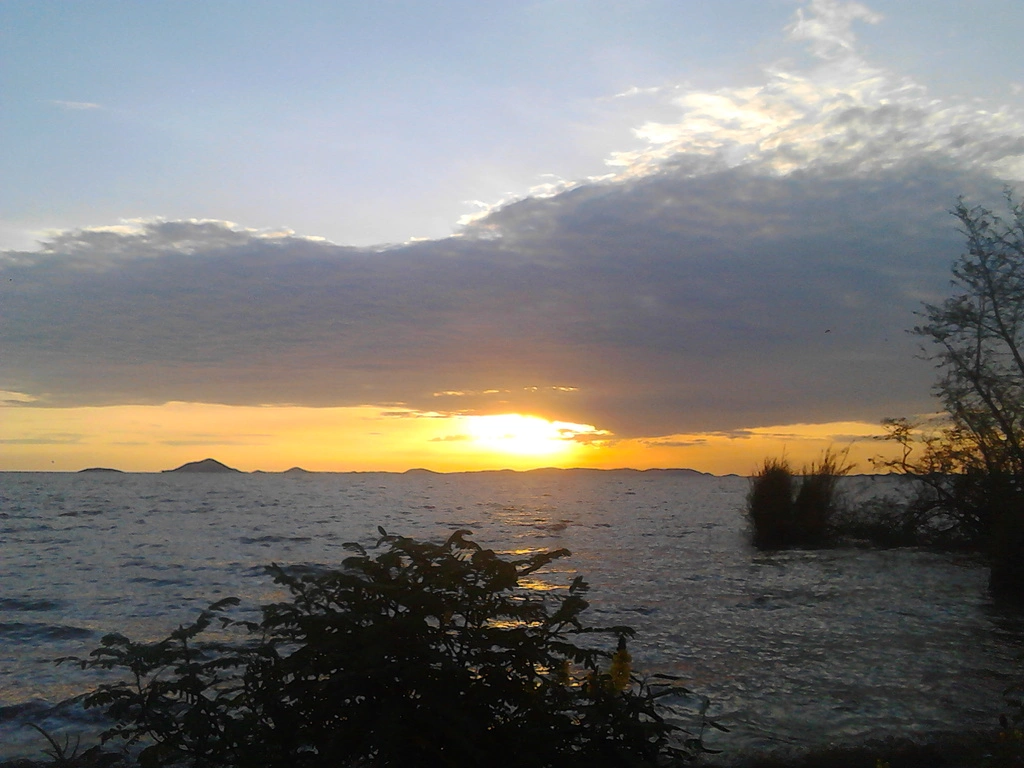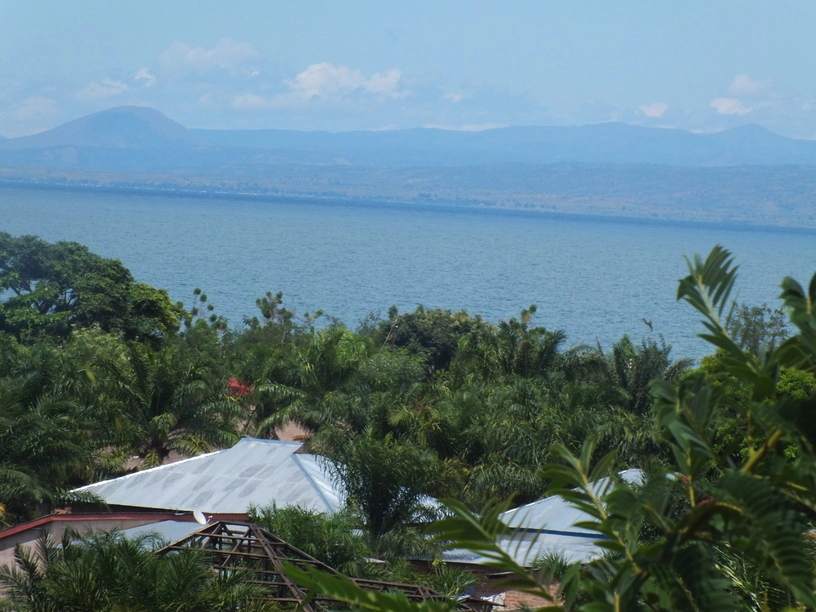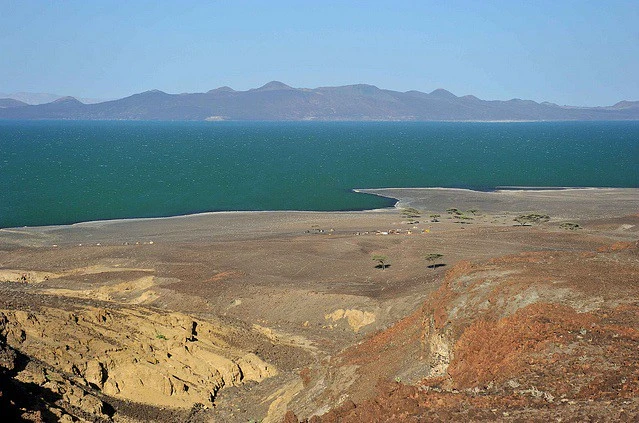The Great Lakes Of Africa refers to the lakes located in the Rift Valley, that is, the Eastern Rift Valley and the areas which surround it. These lakes are nine in total. These lakes combined are said to hold about 27% of all the water in the world. The total landmass covered by these lakes is about 53455 squale miles (138447 square kilometers). Read on as we look at each lake here.
1. Lake Victoria

Lake Victoria is ranked as the lake in Africa with the greatest area with an area of about 23146 square miles (59947 square kilometers). It is the largest tropical lake in the world and the second largest freshwater lake after the famous Lake Superior which is in North America. Lake Victoria covers various countries in East Africa which are Kenya, Tanzania and Uganda, Tanzania covers the largest part at 49% followed by Uganda at 45% and then Kenya at 6%.
The lake was named Victoria by a British explorer called John Speke after Queen Victoria. Lake Victoria faces an environmental problem whereby there is increased growth of algae which depreciates the oxygen levels in the lake. This in turn affects the water animals like fish as they die due to insufficient oxygen.
2. Lake Tanganyika

Lake Tanganyika covers four countries namely Tanzania, the Democratic Republic of Congo, Zambia and Burundi. Most of the area is in Tanzania and the Democratic Republic of Congo. Lake Tanganyika is widely known to be the second oldest freshwater lake in the world and at the same time the second largest in terms of volume.
With a maximum depth of upto 0.91 miles (1470 meters), the lake is ranked to be the second deepest after Lake Baikal in Siberia. It is also known for being the world’s longest freshwater lake. In terms of its length, lake Tanganyika is ranked as the longest lake in the world.
3. Lake Malawi

Lake Malawi is strategically located along the boundaries between Malawi, Mozambique and Tanzania. Due to this, it is found in all three countries. With an area of 11429 square miles (29600 square kilometers), lake Malawi is ranked as the ninth largest lake in the world. In terms of its volume, it comes in the fifth position.
Lake Malawi is widely known for being a meromictic lake. This means that the various layers of the lake do not mix at any point. You may hear the people of Tanzania referring to the lake as Nyasa while the people of Mozambique call it Lago Niassa.
4. Lake Turkana

Lake Turkana is located in the northern parts of Kenya. In the past, the lake was named Rudolf but it was later changed to Turkana. Lake Turkana is famous for being the world’s largest permanent desert lake and at the same time the largest alkaline lake in the world. Having a volume of 203.6km³ the lake is ranked as the fourth largest salty lake in the world. The lake gets its water from only three rivers which are Omo, Turkwel and Kerio. The lake does not have an outlet which makes it salty. Of all the lakes in Kenya, lake Turkana is the largest.
5. Lake Albert

Lake Albert is located in both Uganda and the Democratic Republic Of Congo. Lake Albert is famous for being the seventh largest lake in Africa and of all the lakes in Uganda it comes second in terms of its size. The names of the lake have been changing over time since at first, it was like Mwitanzige and at another time lake Mobutu Sese Seko. Lake Albert has a length of about 160 kilometers, a width of about 30 kilometers and a depth of approximately 51 meters.
6. Lake Kivu

Lake Kivu is along the border of the Democratic Republic of Congo and Rwanda. Lake Kivu has an area of approximately 1042 square miles (2700 square kilometers) and as a result, it is ranked as the eighth largest lake in Africa. The lake is about 56 miles (90 kilometers) long and 31 miles (50 kilometers) wide. Lake Kivu is a source of River Ruzizi which flows into Lake Tanganyika.
Lake Kivu has been in the spotlight for the volcanic activities taking place in the lake. This led to the accumulation of carbon in the lake which has caused a decrease in the number of fish. Whereas swimming in the lake is permitted one should be careful of the carbon in oxide levels.
7. Lake Rukwa

Lake Rukwa lies in the southwestern region of Tanzania. Lake Rukwa is known to be the third largest water body in Tanzania. It is about 112 miles (180 kilometers) long and 20 miles (32 kilometers) wide, which makes its area to be estimated at 2224 square miles (5760 square kilometers).
The size of lake Rukwa has been changing constantly majorly due to the water inlets that it has. There has béen mineral discovery in Lake Rukwa whereby metals such as zinc, copper and mercury have been found. Recently in the year 2016, there was a discovery of Helium in the lake.
8. Lake Mweru

Lake Mweru is found along the border of Zambia and the Democratic Republic of Congo. It is strategically located on the River Congo. Lake Mweru has a length of 73 miles (118 kilometers) and a width of 28miles (45 kilometers).
The main source of lake Mweru is the river Luapula which is from the many swamps in the area. The lake empties into the Luvua river. Lake Mweru tends to be shallower towards the south and deeper in the northern regions with the maximum depths being 20m and 27m.
9. Lake Edward

Lake Edward is along the border of the Democratic Republic of Congo and Uganda. Locally you may hear the people referring to the lake as Rutanzige or Rwicanzige. Lake Edward has a length of about 48 miles (77 kilometers) and a width of about 25 miles (40 kilometers) thus covering an area of about 898 square miles (2325 square kilometers). This area makes Lake Edward the smallest of all the African great lakes.
The lake is the 15th largest in Africa. Lake Edward gets its water from Nyamugasani river, Ishasha river, Rutshuru river, Ntungwe river and Rwindi river. Lake Edward’s waters flow into Lake Albert in the north through river Semliki.
